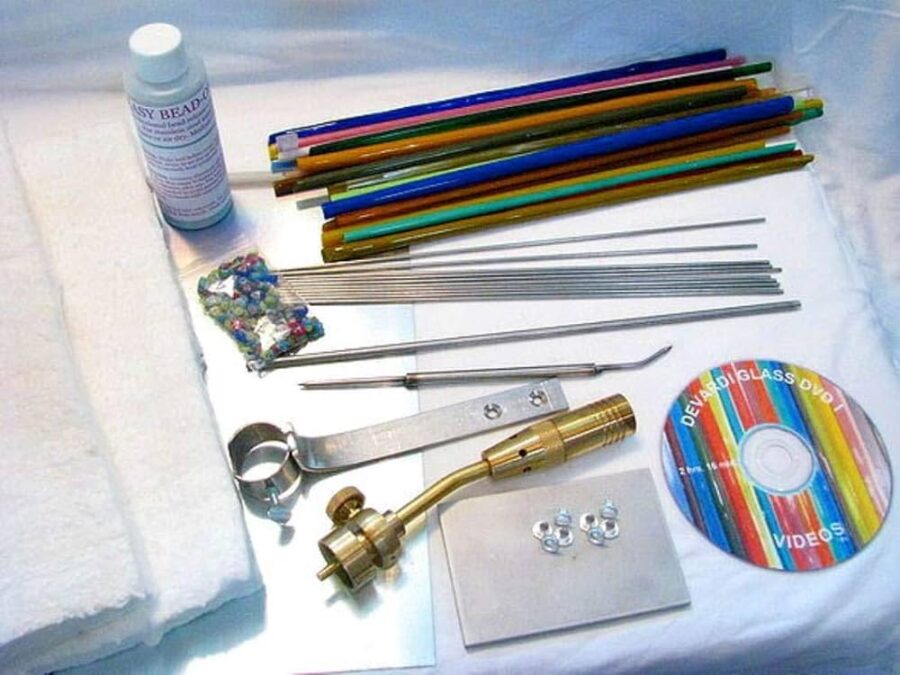Blue glass is a popular glass of choice for decorative items, and can be found in many forms from bottles to figurines. Its beautiful color has made it a sought-after material in glassmaking. To create blue glass, the combination of elements used in the glassmaking process must be precise. In this guide, we will cover the elements used to create blue glass, as well as the process of creating it.
Elements Used to Create Blue Glass
The most important element used to create blue glass is cobalt oxide. Cobalt oxide is a metallic oxide that is often used to produce a deep blue color. It is typically added to the glass melt in amounts ranging from 0.02 to 0.2%. Cobalt oxide is often combined with other elements, such as manganese dioxide, to create a variety of blue shades.
Other elements used to create blue glass include copper, lead, and nickel. Copper is used to create lighter, turquoise shades of blue, while lead is used to create darker shades. Nickel is used to create a greenish-blue color.
The Process of Creating Blue Glass
The process of creating blue glass involves a number of steps. First, the glassmaker must create the glass melt. This involves combining the necessary raw materials and melting them in a furnace. Once the glass melt is created, the glassmaker can then add the elements used to create the desired color.
Once the elements have been added, the glassmaker must then shape the glass. This can be done by blowing, pressing, or casting the glass. After the glass has been shaped, it must then be cooled and annealed.
Conclusion
Creating blue glass is a complex process that requires precise control of the elements used in the glassmaking process. The most important element used to create blue glass is cobalt oxide, which is typically combined with other elements to create different shades of blue. The process of creating blue glass involves creating the glass melt, adding the elements, shaping the glass, and cooling it. With the right combination of elements and the right glassmaking process, you can create beautiful blue glass pieces.
making
Blue glass is created by adding metal oxides to molten glass. Commonly used oxides include cobalt, copper, and/or manganese. The type and amount of oxide added will affect the final color of the glass. For example, cobalt oxide can be used to create a bright blue, while copper oxide can produce a turquoise blue. The glass is then heated to a temperature of around 2000°F and then cooled slowly to create a strong, durable glass.
What Makes Glass Blue? The Element Behind the Color Change
The blue color of glass is caused by the presence of cobalt or cobalt oxide. The cobalt is usually added to the glass in the form of cobalt oxide powder before the glass is heated and molded into the desired shape. The cobalt oxide absorbs some of the yellow and red light from the visible spectrum, leaving behind the blue light. The amount of cobalt oxide in the glass affects the intensity of the blue color. A small amount of cobalt oxide will produce a light blue color and a larger amount will produce a darker blue.
What Elements Create Coloured Glass? – A Guide to the Chemistry of Glass Colouring
The main element responsible for the colour of glass is cobalt, though other elements such as iron, chromium, and manganese can also contribute to the colour. Cobalt is the primary source of blue, violet, and green hues in glass, while other elements are used to create red, yellow, and brown hues. In addition to the elements used to create the colours, other elements are also used to create the desired qualities of the glass, such as clarity and strength. These elements include silica, sodium, calcium, and magnesium.
How Blue Glass is Made with Metal Oxide
The process of making blue glass with metal oxide involves melting a combination of silica, lime, and other natural materials such as soda ash, potash, and borax. The desired color is achieved by adding different amounts of metal oxides such as cobalt, copper, and manganese. The mixture is heated to a temperature of around 2100°C (3800°F) in a furnace and then is allowed to cool slowly. As the glass cools, it crystallizes and the desired color is achieved. The glass is then cut and shaped into the desired form.
This guide offers a comprehensive overview of the elements used to create blue glass. It covers the history of blue glass, the materials used to make it, and the techniques used to achieve the desired color. Overall, this guide is an excellent resource for anyone interested in learning more about how to craft blue glass. My recommendation is to use this guide as a starting point, and then experiment with different material combinations to create unique and beautiful pieces.
blowing
-Blue glass is created by melting silica, soda ash, and lime in a furnace.
-The molten glass is then gathered on a blowpipe, inflated into a bubble, and then shaped by the glassblower.
-An appropriate amount of cobalt oxide is added to the molten glass to create the desired shade of blue.
-The glass is then reheated and placed in an annealing oven to cool slowly, which helps to reduce stress and create a strong, durable piece of blue glass.

